
Content monitoring is a process integral to managing and optimizing online presence. At its core, it involves tracking and analyzing various aspects of digital content to ensure it remains relevant, engaging, and effective in achieving its objectives. This process has become increasingly important in a digital environment where content is abundant, and the competition for audience attention is fierce.
The concept of content monitoring has evolved significantly over the years, paralleling the growth of digital content itself. Today, the vast majority of internet pages struggle to capture organic search traffic, with a notable percentage of web content never reaching its intended audience. This situation highlights the critical need for a strategic approach to content creation and monitoring.
Effective content monitoring is not just about overseeing the performance of digital assets; it’s also about adapting and refining strategies based on real-time feedback and data-driven insights. The aim is to enhance content visibility, engagement, and ultimately, brand awareness.
One key trend in the content marketing sphere is the increasing importance of quality over quantity. Many marketers now prioritize producing high-quality content that resonates with their audience, even if it means publishing less frequently. This shift towards quality is a response to the changing dynamics of audience engagement and the algorithms of search engines and social platforms that favor valuable, relevant content.
Website content monitoring involves closely evaluating the effectiveness of various elements on your or your competitor’s website, including articles, landing pages, and more. This critical examination helps in deriving valuable insights to refine and improve your overall content approach. By tracking user engagement and performance metrics, you can understand the actual impact of your content in achieving vital goals, such as increasing visibility or driving conversions.
Through routine checks, you can discover when several blog posts are experiencing low engagement or high exit rates. This indicates a disconnect between your content and your audience’s interests or needs. By employing analytics tools to identify these discrepancies, you can make informed adjustments to your content strategy. This process allows for the fine-tuning of your content to better meet your audience’s expectations and improve engagement. Essentially, website content monitoring acts as an essential tool for ongoing content strategy optimization, ensuring your content remains relevant and engaging to your audience.
Social Media Content (Video & Ads): Social media content, especially videos and ads, stands at the forefront of engaging and capturing the audience’s attention. Videos have been shown to significantly increase user engagement and time spent on platforms, making them a potent tool for brand messaging and product promotion. Ads, on the other hand, drive targeted actions and conversions. Monitoring these elements can provide insights into what captures the audience’s interest, the effectiveness of ad spend, and how video content contributes to overall engagement metrics.
SEO & Blog Content: This type encapsulates the essence of content marketing with a focus on driving organic traffic through search engines. SEO and blog content are pivotal for building a brand’s online presence, establishing authority in a specific domain, and providing value to the audience through informative and engaging articles. Monitoring SEO performance, including keyword rankings, search visibility, and on-page optimization, alongside blog content analytics, can reveal opportunities for optimization, topic trends, and content gaps in the market.
Webinars, Original Content: Webinars and original content like whitepapers, e-books, or in-depth guides are instrumental in lead generation, education, and deepening engagement with a more invested audience. These content types often represent the higher-effort, higher-value end of the content spectrum, offering detailed insights, thought leadership, and industry trends. Monitoring the performance of these materials can help in understanding which topics resonate with your audience, driving engagement, and converting leads into customers.

In the competitive landscape, content monitoring is not just about oversight—it’s a vital strategy that intertwines content integrity, user experience, brand protection, compliance, and security into the fabric of digital success. As businesses navigate this dynamic environment, the importance of keeping a vigilant eye on both their own and their competitors’ content has intensified. Effective monitoring ensures that content remains accurate and relevant, enhancing user engagement and loyalty by swiftly addressing issues like broken links and slow loading times. It also acts as a shield, protecting the brand’s reputation from potential harm and ensuring compliance with legal standards. Beyond safeguarding, content monitoring and especially competitor content analysis offers valuable insights into audience behavior and industry trends, providing businesses with a strategic edge. This comprehensive approach is essential for any business aiming to thrive online, making content monitoring an indispensable part of maintaining a strong, competitive, and secure online presence.



Social Media Content (Video & Ads):
– Gains insights into trending topics and audience preferences.
– Tailors content to match audience interests based on blog discussions.
– Refines messaging to resonate more effectively with the target audience.
SEO & Blog Content:
– Uncovers high-performing keywords and content structures.
– Enhances content strategy with SEO best practices to boost visibility.
– Maintains relevance and meets evolving audience needs and search behaviors.
Webinars, Original Content:
– Provides inspiration and benchmarks for content quality and engagement.
– Shapes relevant and appealing webinar topics from current discussions.
– Aligns original content with latest industry trends and audience expectations.
Monitoring online content is essential for staying informed about your digital footprint, understanding your audience, and keeping an eye on the competition. Here’s a straightforward approach to effectively monitor online content:
Setting clear goals is the foundational step in establishing an effective content monitoring strategy. It’s like planting a flag in the ground, marking where you want your efforts to lead. In the context of digital marketing and content management, this clarity in purpose serves as a compass, directing all subsequent actions and decisions.
When we talk about goals, we’re referring to specific outcomes you wish to achieve through the vigilant observation and analysis of your content across various platforms. This could range from boosting your website’s visibility in search engine results pages (SERPs), to fostering deeper connections with your audience, or even safeguarding the reputation of your brand in the online arena.
For instance, if improving SEO performance is your goal, content monitoring will involve tracking keyword rankings, identifying content gaps, and understanding the competitive landscape. This enables you to refine your content strategy, ensuring your website remains relevant and visible to your target audience.
One of the most important steps in you succeeding to effectively monitor your and your competitors content is you choosing the right tool. Your accuracy, efficiency, and depth of your insights depend heavily on the capabilities of the tools at your disposal. In the vast digital ecosystem, specialized content monitoring tools serve as your eyes and ears, constantly scanning the web for relevant data that aligns with your predefined goals.
For instance, Competitors.app emerges as a powerhouse in this domain, offering a comprehensive suite of tools that cater to various aspects of content monitoring. Such as:
– SEO performance
– Social media engagement
– keep tabs on brand mentions.
Analyzing and monitoring content quality involves scrutinizing your articles or posts for three key factors:
Relevance, to ensure topics align with your audience’s interests;
Accuracy, to guarantee factual correctness and build trust; and
Engagement, to keep readers interested and interactive.
Quality analysis tools can highlight areas needing enhancement, such as improving the readability of text, ensuring information is up-to-date, and suggesting ways to make content more engaging through visuals or interactive elements. Regularly employing these strategies helps in keeping content standards high and audiences consistently engaged.
Watching your competitors’ content strategies reveals what resonates with your shared audience and identifies gaps in your own content. Understanding their successful approaches, and analyzing how your content can uniquely fulfill audience needs, allows you to differentiate and add unique value, thereby enhancing your competitive edge.

This tool allows businesses to monitor not only their own online content but also that of their competitors. With features that track website changes, social media activity, SEO strategies, and more, Competitors.app offers a comprehensive view of your competitive landscape. It's especially useful for businesses looking to stay one step ahead by analyzing and adapting strategies based on competitors' actions.

A simple, free tool to monitor the web for new content based on specific queries or keywords related to your brand, competitors, or industry.

Offers an extensive suite for monitoring online content, including website performance, SEO, and social media engagement. Its competitive analysis features are particularly valuable for benchmarking against competitors.
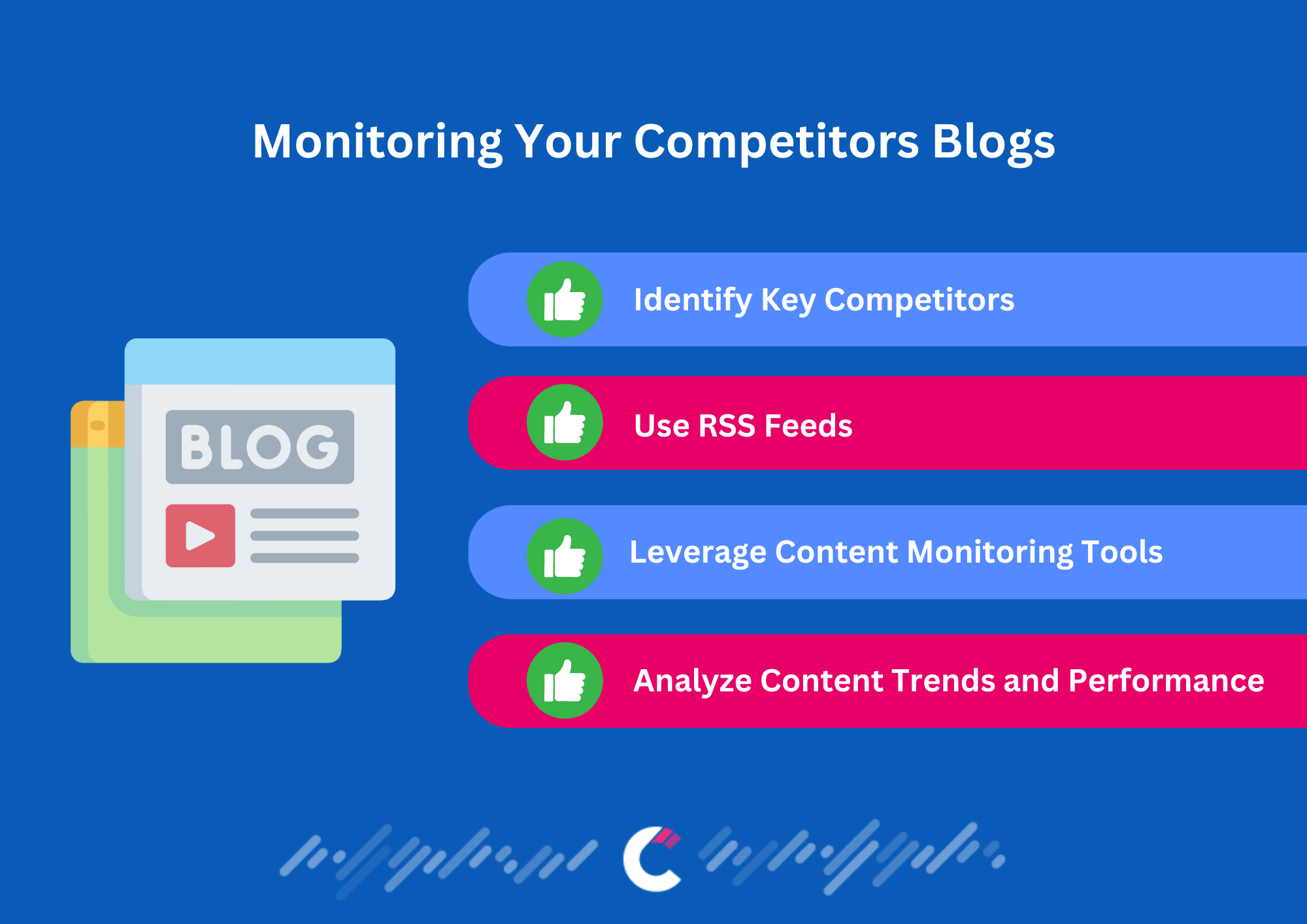
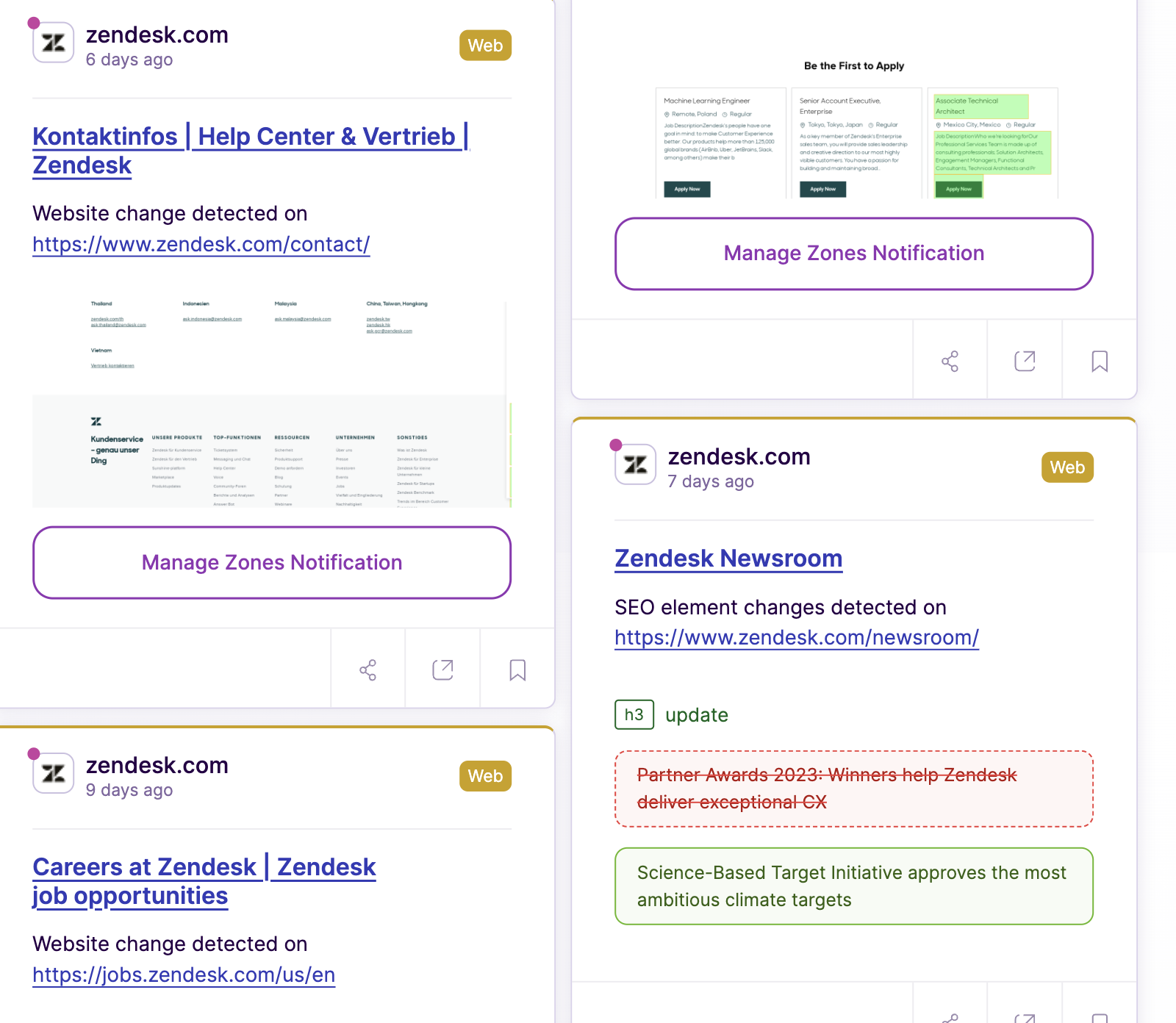
Prioritize High-Impact Pages: Focus on monitoring pages that directly affect your SEO rankings and user engagement. These typically include your homepage, pricing page, product pages, and key blog articles. Find the pages that are the most important to monitor.
You can do the same for your competitors pages. This ensures that you can track competitor website changes and how they optimize their content.
Document Current Content: Before setting up alerts, document the current state of your website’s content. This baseline documentation helps in quickly identifying whether a change is unauthorized or harmful.
Integrate your data with other tools like Google Data Studio or Google Analytics. This configuration allows you to monitor the pages that matter the most to you holistically and compare different metrics like bounce rate, keyword rankings and time spent on page all in one single view.
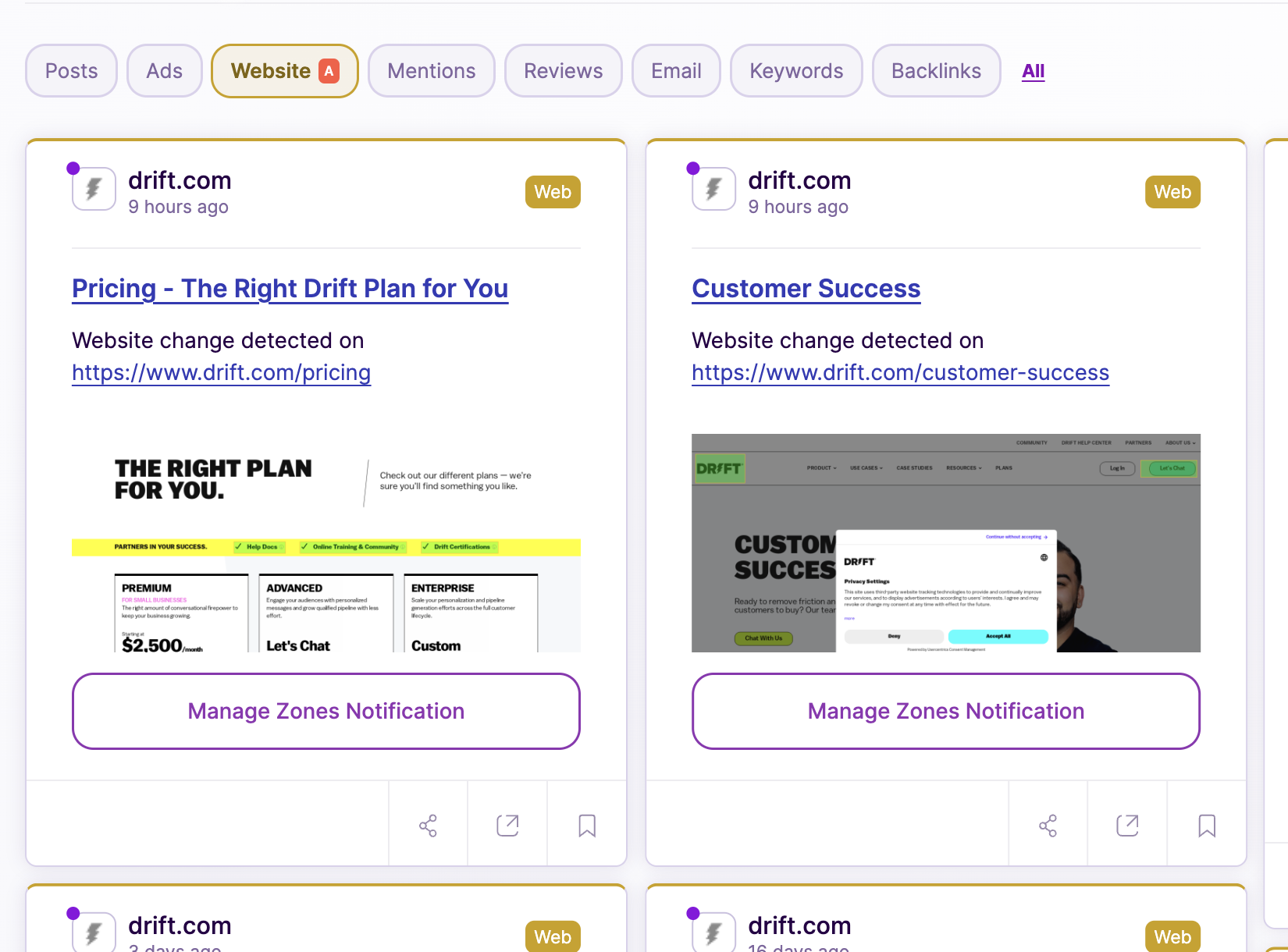
Competitors.app is a powerful tool designed to simplify the process of monitoring your online content and keeping an eye on your competition. Here’s how you can leverage Competitors.app for effective content monitoring:
By following these steps, you can effectively use Competitors.app to monitor online content and gain a competitive edge in your digital marketing efforts.
Gathering competitive intelligence involves systematically collecting, analyzing, and using information about your competitors, market trends, and industry environment. Here’s how to do it effectively:
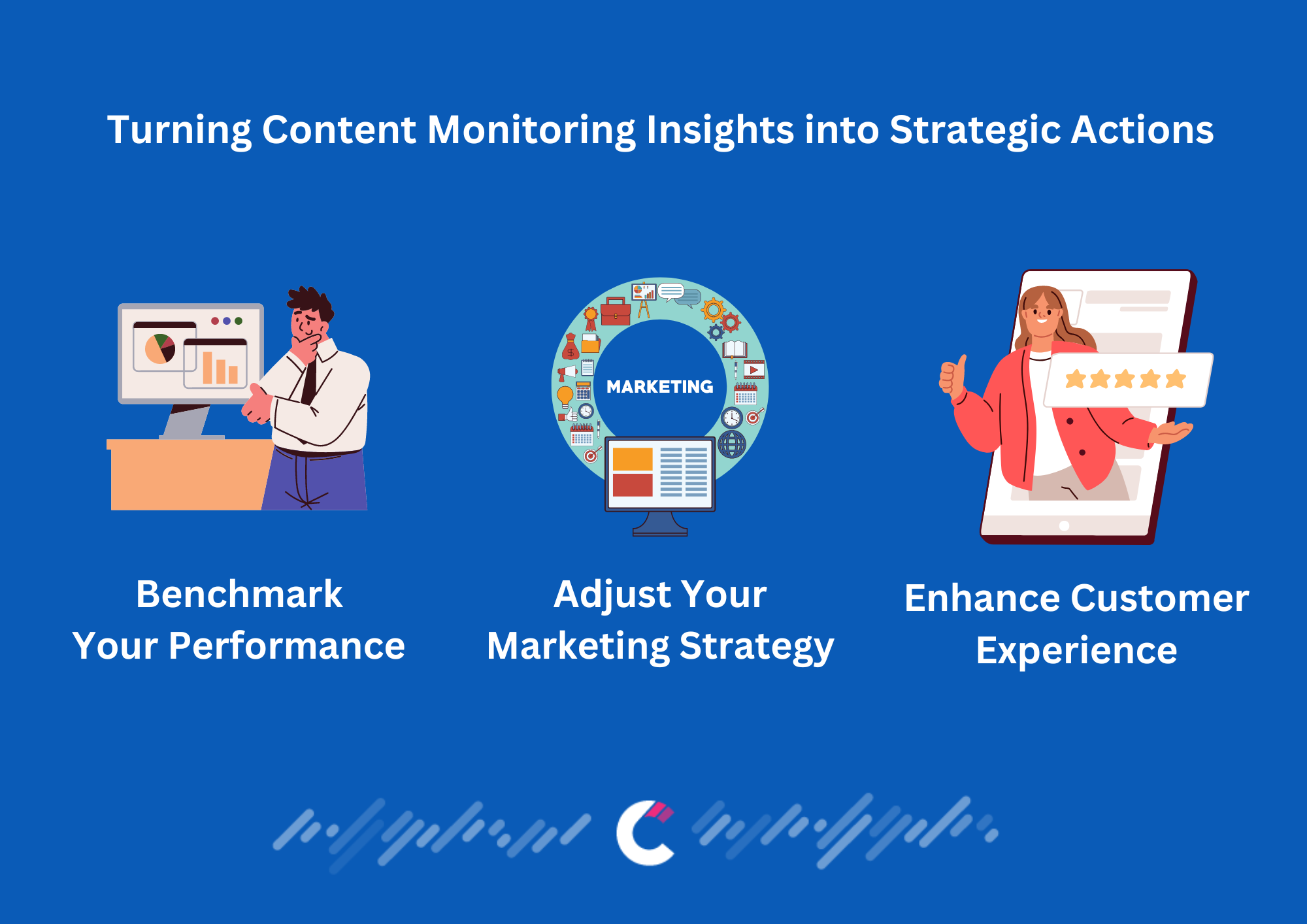
After gathering competitive intelligence, the next step is to turn these insights into strategic actions:
Developing a competitive content strategy requires a keen understanding of your audience, competitors, and industry trends:
For effective website content monitoring, consider these best practices:
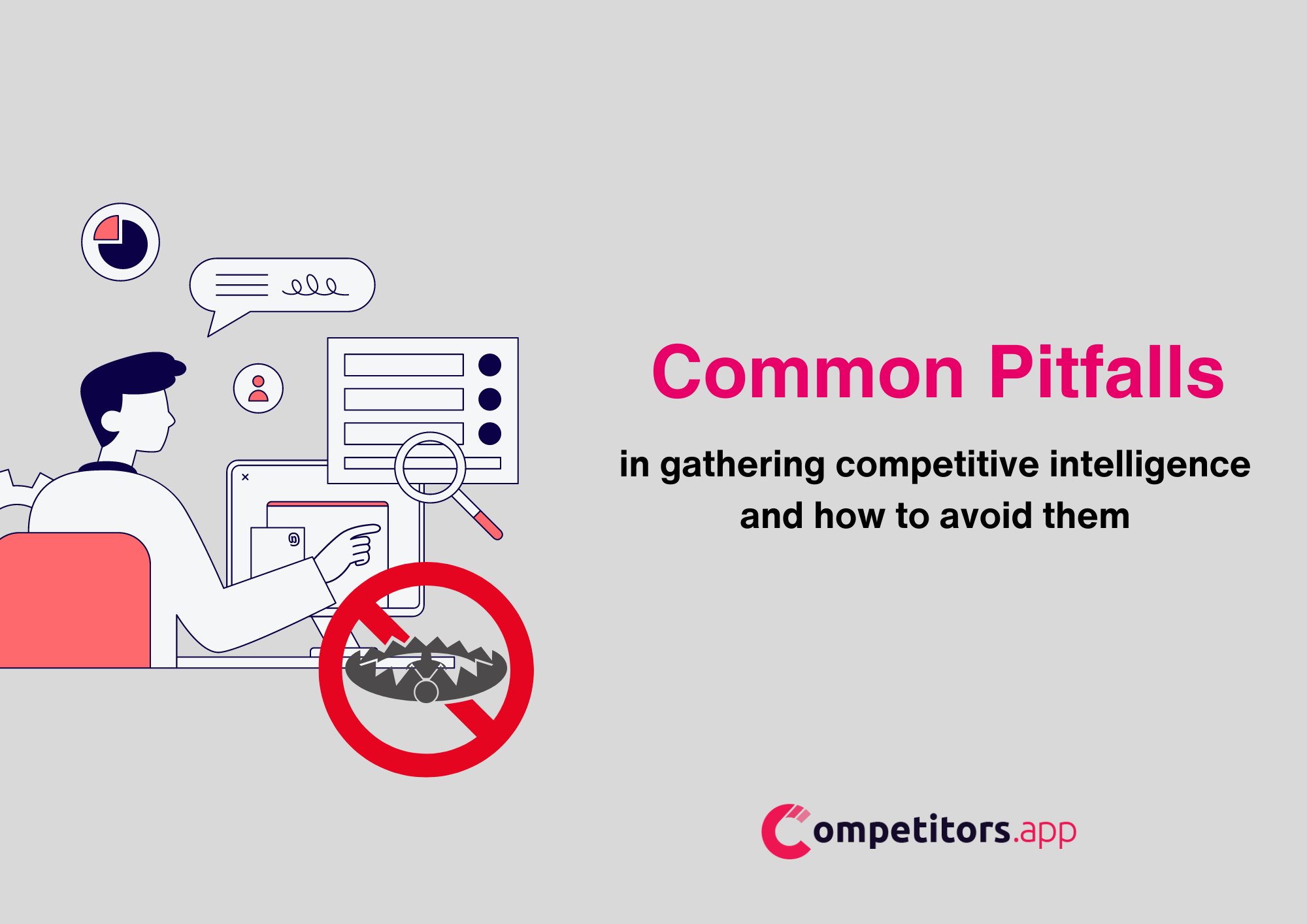
Pitfall: Missing valuable insights by overlooking what customers say about your and your competitors’ products or services.
Avoidance Strategy: Actively monitor and analyze customer reviews, social media comments, and survey responses to gather direct feedback for improvements and innovation.
Pitfall: Focusing too much on competitors can lead to mimicking rather than innovating, potentially causing brand identity dilution.
Avoidance Strategy: Use competitive intelligence as a benchmark, but prioritize developing unique value propositions and differentiators based on your strengths and customer needs.
Pitfall: SEO algorithms and best practices evolve rapidly; failing to keep up can result in lost search visibility and website traffic.
Avoidance Strategy: Stay informed about the latest SEO trends and algorithm updates. Regularly audit your website and adjust your content and SEO strategies accordingly.
Pitfall: Collecting comprehensive competitive intelligence but failing to translate insights into actionable strategies.
Avoidance Strategy: Establish a process for regularly reviewing collected data, deriving actionable insights, and implementing strategic changes across products, services, and marketing efforts.
The primary goal of content monitoring is to oversee and analyze the performance, relevance, and impact of online content. This involves tracking changes, audience engagement, SEO effectiveness, and competitor content strategies to ensure the content remains fresh, competitive, and aligned with business objectives.
Identifying the "best" website content monitoring software depends on specific needs and objectives. Tools like Competitors.app, SEMrush and Ahrefs are renowned for SEO and content analysis, whereas BuzzSumo excels in social media and content engagement insights. Competitors.app is highly recommended for competitor content tracking, offering a comprehensive view of your competitive landscape.
The frequency of content monitoring should align with your content update cycle and marketing goals. For dynamic industries, monitoring might be needed weekly or even daily. For more stable sectors, a monthly review could suffice. Regular monitoring is crucial for timely adjustments to content strategy.
Yes, content monitoring can significantly improve your website's SEO. By tracking keyword performance, backlink profiles, and competitor SEO strategies, you can identify areas for optimization, adjust your content to rank higher in search engine results, and enhance your overall online visibility.
While user engagement is a critical metric, it's not the only one to monitor. Other important metrics include traffic sources, bounce rate, conversion rate, and SEO rankings. A holistic approach to content monitoring, considering a range of metrics, provides a more comprehensive view of content performance.
Yes, there are several free content monitoring tools available. Google Alerts offers basic web monitoring for specific keywords. Ubersuggest and MozBar provide free SEO insights, and social media platforms like Twitter and Facebook have built-in analytics tools for monitoring engagement and reach. These free tools can be a good starting point for businesses with limited budgets.